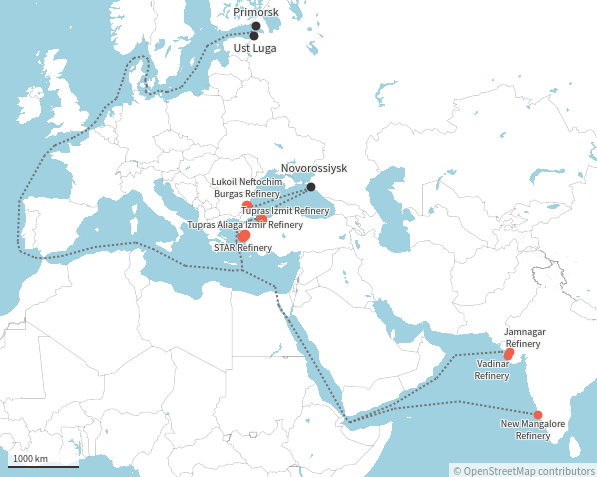A Global Witness investigation reveals that in 2023 the EU imported 130 million barrels of seaborne refined products – mostly diesel – from refineries processing Russian crude. These purchases brought nearly €1.1 billion in direct tax revenues to the Kremlin.
The sum equals NATO’s recent €1.1 billion contract to supply Ukraine with artillery ammunition. The sum also allows the Kremlin to purchase over 1,200 Kalibr cruise missiles or 60,000 Shahed drones, the study compares.
The fuel is entering the EU due to a loophole in sanctions, which allows products refined from Russian oil in third countries to flow into the bloc. Refineries in India and Türkiye import discounted Russian crude, refine it into diesel, jet fuel, or gasoline, and legally sell these products to embargoing jurisdictions like the EU.
Loophole keeps demand for Russian oil high and also allows intermediaries to reap additional profits. Russian fuel also enters the UK and the US through the same refining loophole. Global Witness estimated that 5% of UK flights ran on jet fuel made from Russian oil.
“While it is impossible to track specific molecules, we can analyze the relative volume of Russian vs. non-Russian oil used in a refinery’s feedstock, where data is available. The refineries we identified that export such products to the EU used between 20% and 90% Russian oil in their feedstocks, allowing us to estimate that 35 million out of the total 130 million barrels entering EU ports were derived directly from Russian crude oil,” the researchers told about their methodology.
As was earlier reported, India’s imports of Russian crude oil more than doubled in 2023, while the EU’s imports of refined oil from India grew to record levels the same year.
Read more:
- EU countries buy refined Russian oil from India at record rates — Independent
- Poland ditches Ukraine border meeting called by Zelenskyy
- Ukraine, Denmark sign agreement on security guarantees for next 10 years
- US Senate majority leader Schumer arrives in Ukraine
- Russia plans 68% increase in 2024 military spending, surpassing Ukraine’s defense budget 2.5 times




